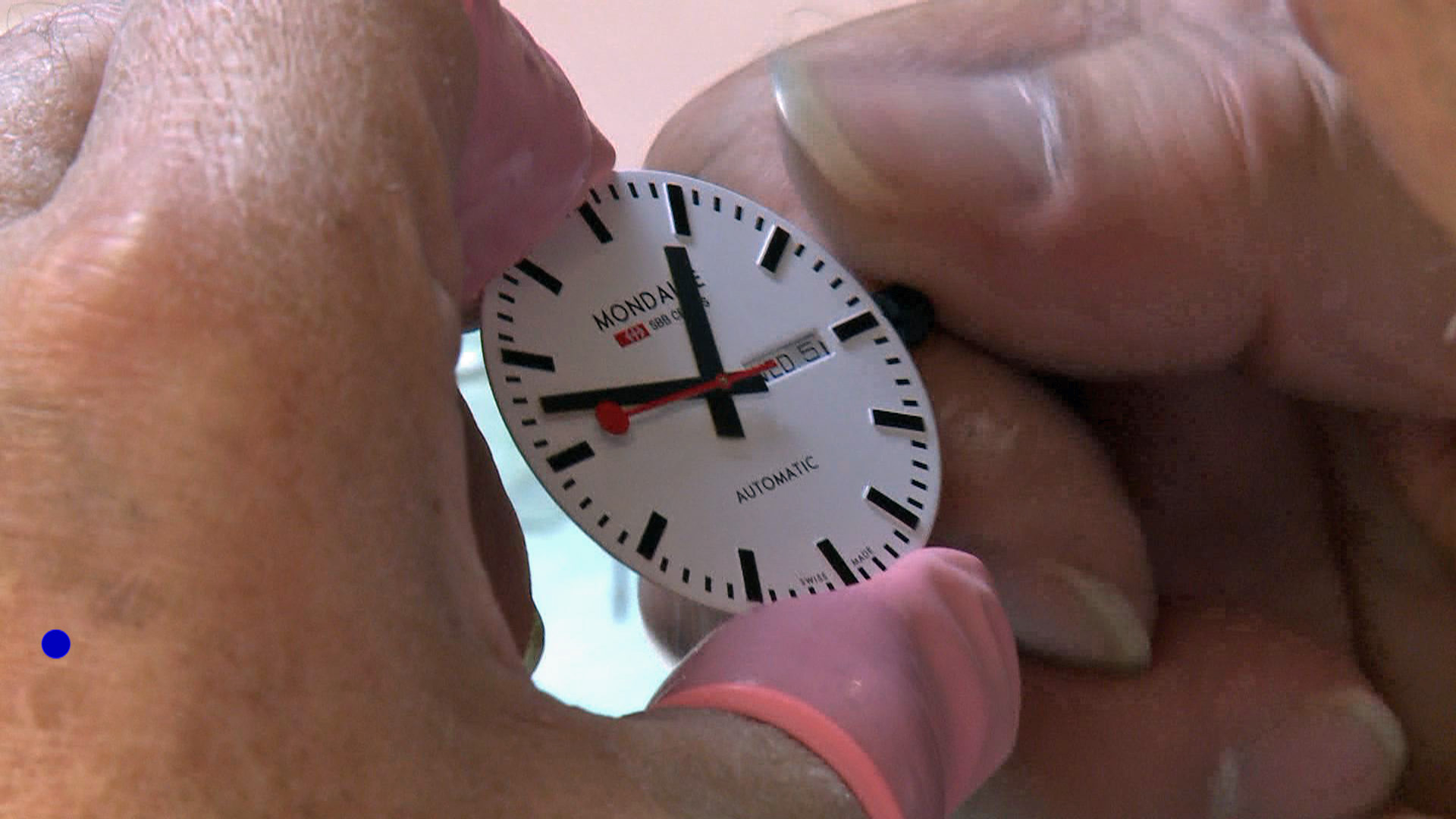‘Made in the world’ creates winners and losers

The next airplane you board will likely have a tail made in Italy, doors from France, American control instruments and wings from Japan – a “made in the world” approach that’s opening economic doors but risks excluding poorer countries.
One country researches a product, the next designs it, another manufactures the parts and a fourth takes care of assembly: this phenomenon comes from so-called GVCs, or Global Value Chains, which the United Nations Conference on Trade and Development (UNCTAD) says make up 80 per cent of global trade.
GVCs have become the nervous system of the world economy, according to the Global Agenda Councils of Davos’ World Economic Forum. World Trade Organisation (WTO) spokesperson Keith Rockwell says GVCs have three main advantages: new trade opportunities, more efficient trade and the creation of jobs.

More
Are Swiss watches Swiss enough?
Job prospects
When only finished goods were being traded between countries, “smaller and poorer countries were forced out of the market. Today, even small, emerging countries can build up an industry that’s able to concentrate on a specific segment of the car or electronics industries,” Rochwell tells swissinfo.ch.
“Countries supply those partial products that are advantageous for them from a cost perspective. In that way, GVCs often lead to direct investments which create jobs.”
Hans-Peter Egler, the head of trade promotion at the State Secretariat for Economic Affairs (SECO), agrees with those advantages to a global trade system; he says it creates opportunities as well as the efficient exchange of goods and services between different markets.
No cure-all
But GVCs also have their share of weaknesses. Although they provide the opportunity for developing countries to integrate into the world trade market, they’re not available to all economies, says Jean-Pierre Lehmann, professor of international economic policy in Lausanne and one of the authors of the report “The Changing Geography of GVCs”.
According to the report, firms participating in the GVC chain must be able to guarantee to their clients that they can produce materials to the necessary standard and under acceptable work conditions.
And the WTO admits that not all economies are able to use this form of trading to its full potential. “It’s true that many poor countries don’t take part in the GVCs the way they would like. This is often due to a capacity problem. They don’t have the necessary infrastructure, laws and knowledge,” explains Rockwell.
Both the WTO and the OECD warn that fragmenting production processes presents a challenge when it comes to observing and keeping track of world trade.
“What you see isn’t really the reality,” the OECD notes, with a symbolic example: an iPad tablet manufactured for $187 is made up of the components from the following countries:
- Korea ($80.05)
- China ($20.75)
- US ($22.88)
- Germany ($16.08)
- Others ($47.75)
But that’s only part of the story, since supply firms also import intermediate products for their own production.
Every time that a product or its components cross a border for processing or taxing, that incident is recorded.
GVCs distort the traditional way of measuring foreign trade. UNCTAD estimates that out of the $19 billion in product imports worldwide, $5 billion have been recorded several times.
And the WTO estimates that trade in 2008 between the US and China would have been 40% less if a different recording method had been used.
Through the Made in the World initiative, the OECD and the WTO are working on a method to take into account the influence of GVCs on cross-border trade through an open database.
Avoiding exclusion
Different organisations, such as Aid for Trade, are trying to build up the weakest members of the global supply chain. The WTO-supported initiative links agencies promoting international cooperation and donors with the goal of helping governments of developing countries overcome obstacles to contributing to international trade. Such countries include Burkina Faso, Colombia, Vietnam, Honduras and Haiti.
Rockwell recalls that in years past, around $40 billion (CHF37.8 billion) was spent on such programmes for developing countries. But those countries also had to commit to attracting investment and improving their competitiveness, as was the case in Bangladesh, Cambodia, Vietnam and Costa Rica.
Switzerland also contributes its part to a “made in the world” global trade, which favours emerging markets. SECO encourages this model with development programmes, explains Egler.
“We support the development of sustainable agricultural raw products like coffee, cocoa and cotton as well as companies’ commitment to upholding the International Labour Organisation’s mandated working conditions,” he says.
Good for US and China
But there’s an inherent challenge in building up the “made in the world” economic model: according to Rockwell, its biggest supporters “are those that have already integrated themselves into the global supply chain, such as Costa Rica, Chile, Mexico, China, Singapore, Malaysia, Japan, the US, Canada and most European states.” The least interested, he says, are those that have not yet joined the supply chain.
To Lehmann, “the US is clearly the most favoured country through the GVCs,” demonstrated by the fact that multinational companies like Apple know how to pull the largest profits out of this trade model.
GVCs also help China’s economic development, “although in the face of increasing labour costs, it could now observe a shift to Asian countries with cheaper labor, such as Vietnam, Bangladesh and Indonesia,” Lehmann remarks, adding that the development of GVCs is still limited in Africa and Latin America, with the exception of Mexico and Costa Rica.
Well-positioned Switzerland
Lehmann and others agree that Switzerland is among the winners in the global trade system.
Rockwell underlines the significance of the export sector for a country with only eight million inhabitants and Lehmann believes that the major Swiss multinational companies are seeing successful trade under the “made in the world” model.
“Swiss industrial production is characterized by strong, highly specialized SMEs that import pre-fabricated or semi-finished products, then export and convert them with added value,” says Egler.
According to the OECD, such “intermediate” products make up 70 per cent of the Swiss chemical industry and 60 per cent of textiles.
Still, “made in the world” production hasn’t taken over. Observers of its accelerated expansion around the globe point out that its future success is very dependent on sensitive factors that are difficult to weigh.
Lehmann points to the 2011 floods in Thailand that threatened important deliveries from that country to the international auto industry and brought strained Thai relations with China and Japan to light.
“[Thailand is] strongly integrated in production but has tense political relationships where a risk of war, however small, does exist.”
(Translated by Veronica DeVore)

In compliance with the JTI standards
More: SWI swissinfo.ch certified by the Journalism Trust Initiative








You can find an overview of ongoing debates with our journalists here . Please join us!
If you want to start a conversation about a topic raised in this article or want to report factual errors, email us at english@swissinfo.ch.